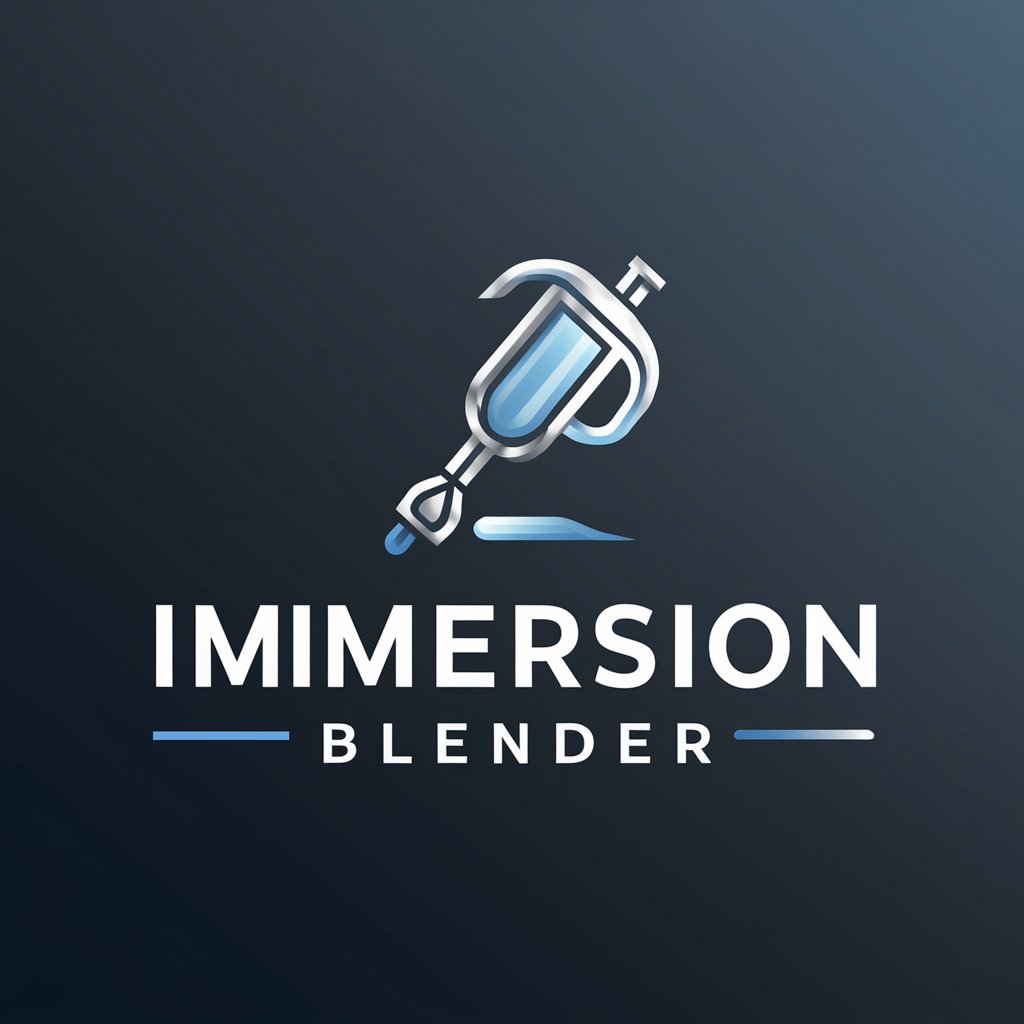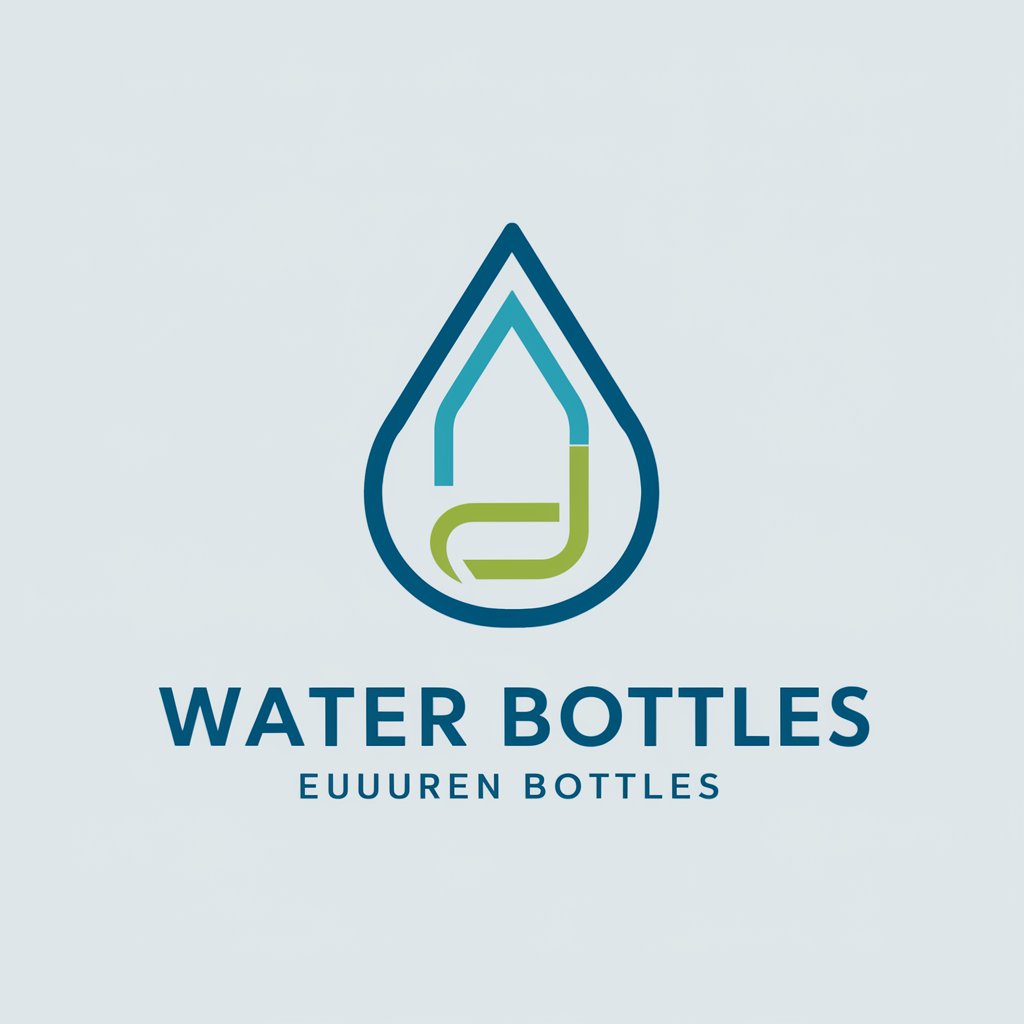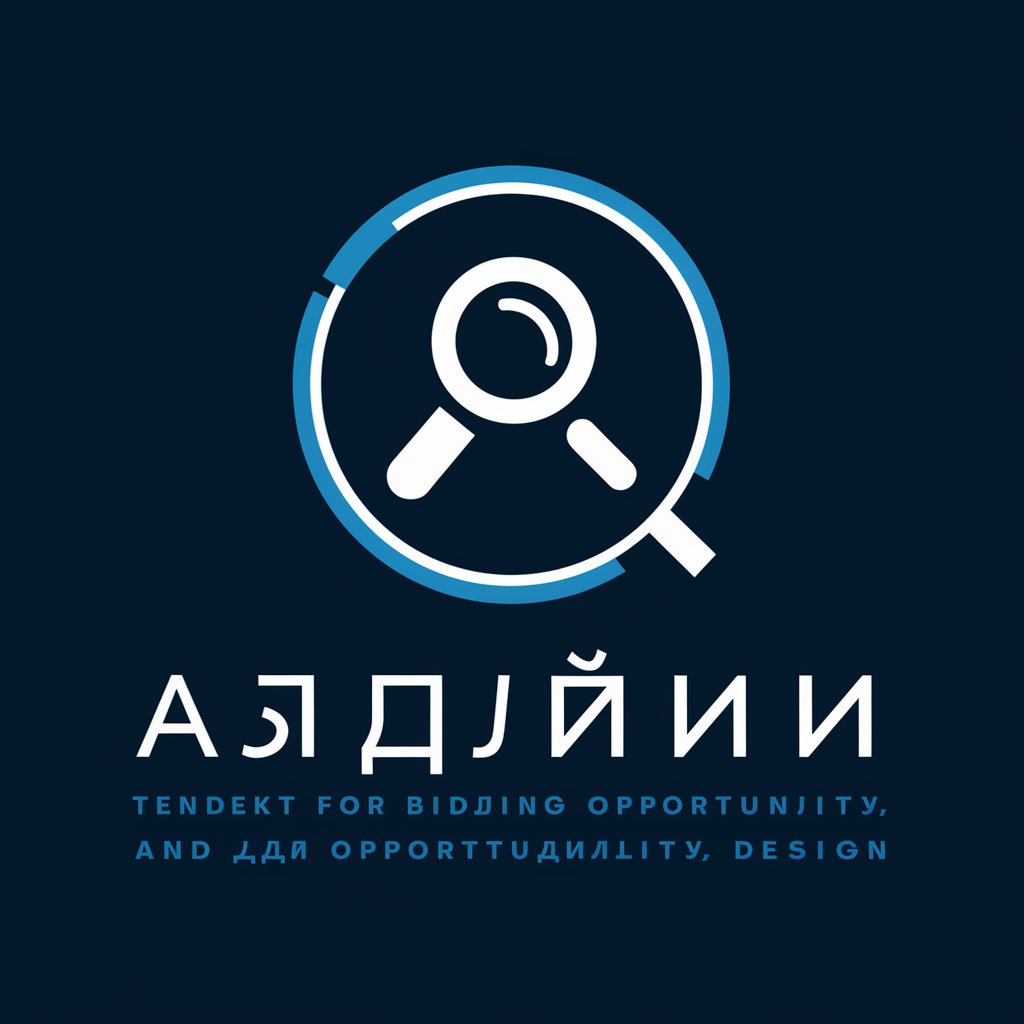Immersion Blender - Immersion Blender Expertise

Welcome! I'm here to help with all your immersion blender needs.
Blend seamlessly with AI-powered precision
What are the best features to look for in an immersion blender?
How can I effectively use an immersion blender for making soups?
Can you suggest some recipes that require an immersion blender?
What are the maintenance tips for keeping an immersion blender in top condition?
Get Embed Code
Overview of Immersion Blenders
An immersion blender, also known as a stick blender or hand blender, is a versatile kitchen appliance designed for blending ingredients directly in the container in which they are being prepared. This differs from traditional blenders, which require you to transfer the contents into their specific blending jar. The fundamental design of an immersion blender includes a long, slender shaft with blades at one end and a motor housed in the handle at the other. This design allows for ease of use and accessibility, especially when blending large quantities or hot substances. Examples of use include puréeing soups directly in the pot, emulsifying sauces, or whipping creams. This tool is particularly valued for its ability to blend with precision and minimal mess, making it a favored choice for both professional chefs and home cooks. Powered by ChatGPT-4o。

Core Functions of Immersion Blenders
Soup and Sauce Puréeing
Example
Blending cooked vegetables and broth directly in the pot to create a smooth, creamy soup.
Scenario
A cook prepares a large pot of butternut squash soup. Instead of transferring the hot soup in batches to a countertop blender, they use an immersion blender to purée the soup directly in the pot, achieving a smooth texture with less risk of burns or spills.
Emulsifying
Example
Making homemade mayonnaise or vinaigrette by blending oil into vinegar and other ingredients to create a stable emulsion.
Scenario
A chef wishes to prepare a fresh batch of aioli. By slowly drizzling oil into a mixture of egg yolk, lemon juice, and seasonings while using an immersion blender, they achieve a perfect emulsion, resulting in a thick and creamy aioli without the need for a food processor.
Whipping and Frothing
Example
Creating whipped cream or frothing milk for coffee beverages.
Scenario
A home baker uses an immersion blender with a whisk attachment to whip heavy cream into stiff peaks for a dessert topping, offering a quicker and more convenient solution than manual whisking.
Baby Food Preparation
Example
Blending cooked fruits, vegetables, and meats into smooth, easily digestible purees for infants.
Scenario
Parents looking to prepare homemade baby food use an immersion blender to puree steamed carrots and peas directly in the cooking vessel, ensuring that the food is of the right texture and temperature for their child.
Smoothie and Beverage Preparation
Example
Mixing fruits, vegetables, and other ingredients to create smoothies, shakes, or other blended beverages.
Scenario
A fitness enthusiast blends spinach, banana, protein powder, and almond milk directly in a tall cup using an immersion blender, creating a healthy smoothie with minimal cleanup.
Ideal Users of Immersion Blenders
Home Cooks
Individuals who enjoy preparing meals at home and seek convenience and efficiency in their cooking processes. Immersion blenders are particularly beneficial for those with limited kitchen space or who dislike washing multiple dishes, as they can blend, puree, and emulsify directly in the cooking pot.
Professional Chefs
Culinary professionals who require quick, efficient tools for preparing sauces, soups, and dressings. Immersion blenders offer precision and the ability to process large quantities of food directly in the cooking vessel, essential for high-volume kitchens.
Health and Fitness Enthusiasts
Individuals focused on nutrition and fitness who frequently make smoothies, protein shakes, or other health-focused beverages. Immersion blenders provide an easy and fast way to blend a variety of ingredients into nutrient-rich drinks.
Parents of Infants
Parents looking for an easy and quick way to prepare healthy, homemade baby foods. Immersion blenders allow for the preparation of smooth, easily digestible purees, offering a fresh and nutritious alternative to store-bought options.
Coffee and Tea Aficionados
People who enjoy crafting their own coffee shop-style beverages at home. Immersion blenders can be used to froth milk for cappuccinos, lattes, and other specialty coffee drinks, enhancing the at-home barista experience.

How to Use an Immersion Blender
1
Initiate your culinary journey by accessing a platform offering hands-on experience without the necessity for account creation or premium subscriptions.
2
Ensure the immersion blender is assembled correctly, with the blade attachment securely fixed to the motor body.
3
Select the appropriate speed setting for your task; start on a low setting and increase as needed to prevent splashing and ensure smooth blending.
4
Submerge the blade fully in the ingredients before turning on the blender to minimize splashing. Use an up-and-down motion to blend ingredients to desired consistency.
5
After use, immediately rinse the blade under warm water and follow the manufacturer's instructions for cleaning and maintenance to prolong the life of your immersion blender.
Try other advanced and practical GPTs
天赋导师
Empowering Your Talent Journey with AI

Quilt Whisperer
Crafting quilts, powered by AI

Ebooks
Empowering reading with AI-enhanced ebooks

Due Diligence Advisor
Empower Your Investment Decisions

Water Bottle
Empower your hydration with AI insights.

Flowers
Cultivating beauty, one flower at a time.

Trad Wife
Reviving Tradition with AI

招标侦察员
Empowering Your Bids with AI-driven Insights

Arquiteto do conhecimento
Building Knowledge, Simplifying Complexity

Edgar - Your AI Sales Trainer
Elevate Your Sales Game with AI

Insurance
Empowering Your Insurance Decisions with AI

사내 교육_ 부가세 교육
Empower with AI-driven VAT Education

Immersion Blender Q&A
What makes an immersion blender different from a traditional blender?
An immersion blender is designed for direct use in any container, offering versatility and ease in blending soups, sauces, and other mixtures without the need for transferring contents to a separate appliance. It's ideal for smooth purees and emulsifying directly in the cooking pot.
Can I use an immersion blender to make whipped cream?
Yes, an immersion blender can efficiently whip cream. Ensure the cream is cold and use a high-speed setting, moving the blender in a circular, up-and-down motion until the cream reaches the desired consistency.
Is it safe to use an immersion blender in hot liquids?
Yes, immersion blenders are designed for use in hot liquids, making them perfect for blending soups and sauces directly in the pot. However, exercise caution to prevent splashing and ensure the liquid is not boiling to avoid potential injury.
How do I clean my immersion blender?
For most models, detach the blending shaft and wash it with warm, soapy water, using a brush to remove food particles around the blade. The motor body should never be submerged in water but can be wiped with a damp cloth.
Can an immersion blender replace a food processor?
While an immersion blender is versatile, it's best suited for blending liquids and making smooth purees. It can perform some tasks of a food processor, like making small batches of pesto or salsa, but may not be suitable for more demanding tasks like dough kneading or slicing vegetables.
